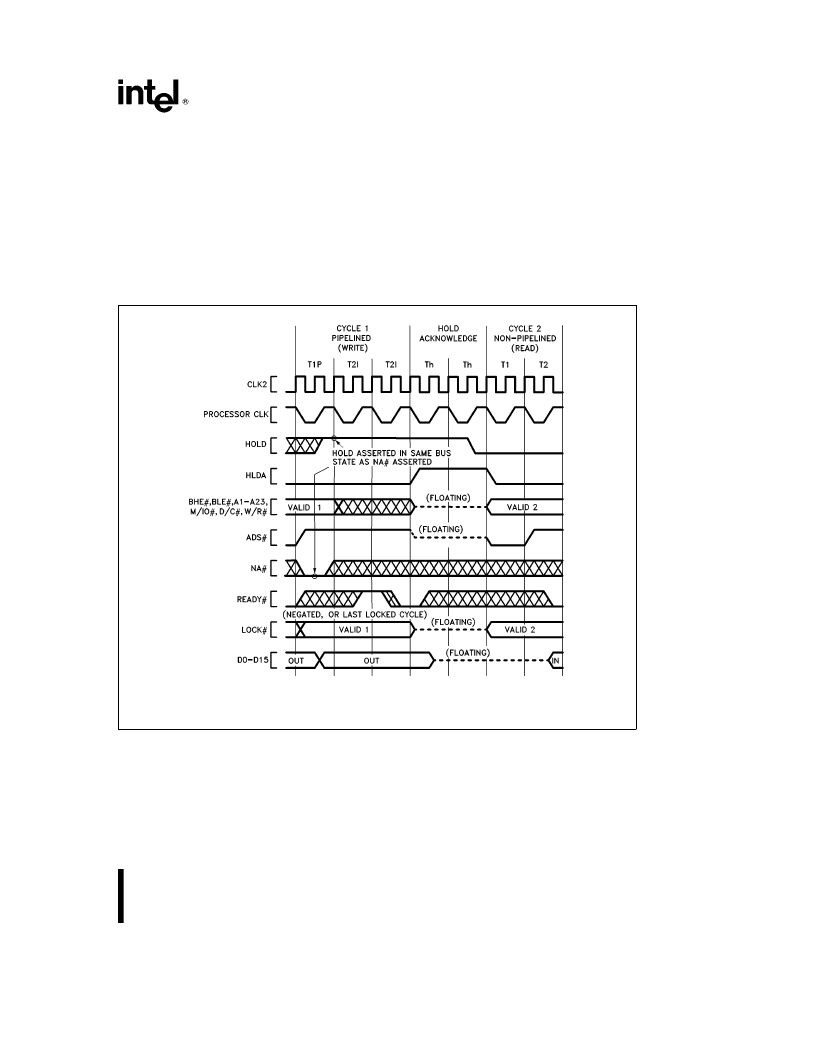- 您現(xiàn)在的位置:買賣IC網(wǎng) > PDF目錄373200 > KU386 (Intel Corp.) SX MICROPROCESSOR PDF資料下載
參數(shù)資料
| 型號: | KU386 |
| 廠商: | Intel Corp. |
| 英文描述: | SX MICROPROCESSOR |
| 中文描述: | SX微處理器 |
| 文件頁數(shù): | 61/102頁 |
| 文件大?。?/td> | 1268K |
| 代理商: | KU386 |
第1頁第2頁第3頁第4頁第5頁第6頁第7頁第8頁第9頁第10頁第11頁第12頁第13頁第14頁第15頁第16頁第17頁第18頁第19頁第20頁第21頁第22頁第23頁第24頁第25頁第26頁第27頁第28頁第29頁第30頁第31頁第32頁第33頁第34頁第35頁第36頁第37頁第38頁第39頁第40頁第41頁第42頁第43頁第44頁第45頁第46頁第47頁第48頁第49頁第50頁第51頁第52頁第53頁第54頁第55頁第56頁第57頁第58頁第59頁第60頁當(dāng)前第61頁第62頁第63頁第64頁第65頁第66頁第67頁第68頁第69頁第70頁第71頁第72頁第73頁第74頁第75頁第76頁第77頁第78頁第79頁第80頁第81頁第82頁第83頁第84頁第85頁第86頁第87頁第88頁第89頁第90頁第91頁第92頁第93頁第94頁第95頁第96頁第97頁第98頁第99頁第100頁第101頁第102頁

Intel386
TM
SX MICROPROCESSOR
RESET should remain asserted for at least 15 CLK2
periods to ensure it is recognized throughout the
Intel386 SX Microprocessor, and at least 80 CLK2
periods if self-test is going to be requested at the
falling edge. RESET asserted pulses less than 15
CLK2 periods may not be recognized. RESET puls-
es less than 80 CLK2 periods followed by a self-test
may cause the self-test to report a failure when no
true failure exists.
Provided the RESET falling edge meets setup and
hold times t
25
and t
26
, the internal processor clock
phase is defined at that time as illustrated by Figure
5.19 and Figure 7.7.
A self-test may be requested at the time RESET
goes inactive by having the BUSY
Y
input at a LOW
level as shown in Figure 5.19. The self-test requires
approximately (2
20
a
60) CLK2 periods to com-
plete. The self-test duration is not affected by the
test results. Even if the self-test indicates a problem,
the Intel386 SX Microprocessor attempts to proceed
with the reset sequence afterwards.
After the RESET falling edge (and after the self-test
if it was requested) the Intel386 SX Microprocessor
performs an internal initialization sequence for ap-
proximately 350 to 450 CLK2 periods.
240187–33
NOTE:
HOLD is a synchronous input and can be asserted at any CLK2 edge, provided setup and hold (t23 and t24) require-
ments are met. This waveform is useful for determining Hold Acknowledge latency.
Figure 5.18. Requesting Hold from Idle Bus (NA
Y
active)
61
相關(guān)PDF資料 |
PDF描述 |
|---|---|
| KU80C186EC25 | 16-BIT HIGH-INTEGRATION EMBEDDED PROCESSORS |
| KU80C188EC16 | 16-BIT HIGH-INTEGRATION EMBEDDED PROCESSORS |
| KU80C188EC25 | 16-BIT HIGH-INTEGRATION EMBEDDED PROCESSORS |
| KU80L186EC16 | 16-BIT HIGH-INTEGRATION EMBEDDED PROCESSORS |
| KU80L186EC20 | 16-BIT HIGH-INTEGRATION EMBEDDED PROCESSORS |
相關(guān)代理商/技術(shù)參數(shù) |
參數(shù)描述 |
|---|---|
| KU-3C-110D | 制造商:M.E.C. Relays 功能描述: |
| KU-3C-120A | 制造商:M.E.C. Relays 功能描述: 制造商:Master Electronic Controls (MEC) 功能描述: |
| KU-3C-12A | 制造商:M.E.C. Relays 功能描述: |
| KU-3C-12D | 制造商:M.E.C. Relays 功能描述: |
| KU-3C-240A | 制造商:M.E.C. Relays 功能描述: |
發(fā)布緊急采購,3分鐘左右您將得到回復(fù)。